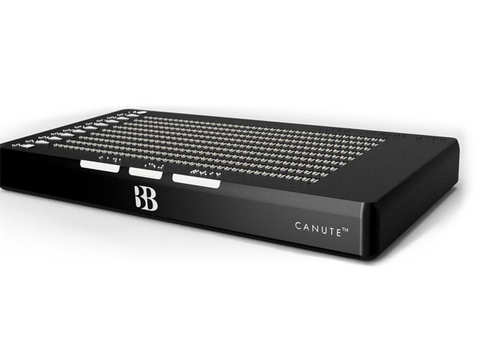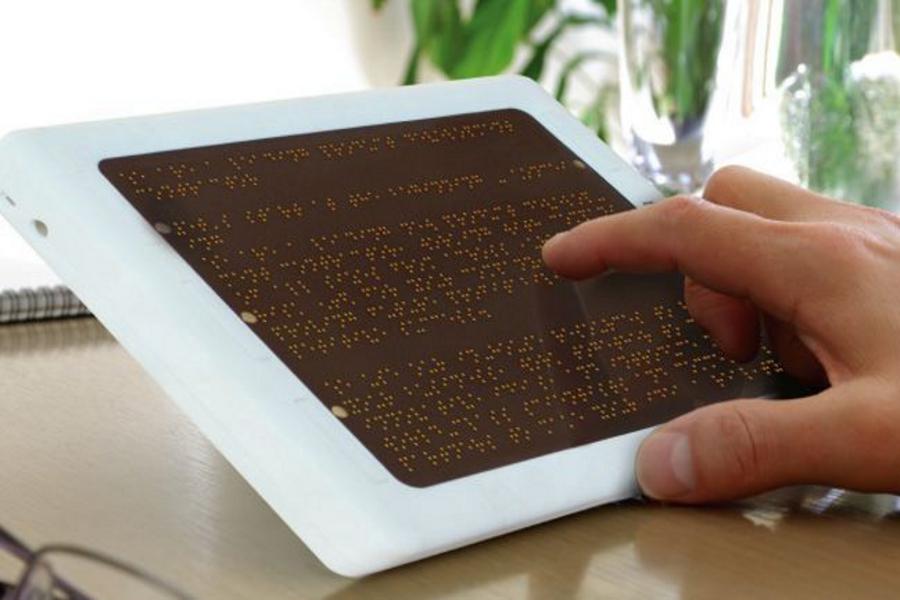Discover Innovative Tools Developed for the Visually Damaged
The growth of innovative tools for the visually impaired represents a significant improvement in access and independence. Technologies such as smart glasses with AI abilities and mobile applications developed to provide auditory descriptions are improving daily experiences for individuals. Additionally, wearable tools that use haptic responses boost ecological recognition, while modern-day Braille developments use brand-new ways to involve with message. As these tools remain to develop, their influence on the lives of those with visual disabilities elevates crucial questions regarding the future of inclusivity and autonomy in various aspects of life. What lies ahead in this technical landscape?
Smart Glasses for Navigation

Smart glasses designed for navigation are transforming the method aesthetically damaged individuals interact with their environment. These advanced devices make use of a mix of cam innovation, expert system, and acoustic feedback to provide real-time info concerning environments. By utilizing barrier discovery systems, clever glasses can inform customers to potential threats, enabling more secure mobility in both unknown and acquainted setups.
The assimilation of GPS technology additionally improves navigating capabilities, permitting customers to get acoustic instructions as they relocate. This hands-free strategy not only fosters independence yet additionally empowers visually damaged individuals to browse city landscapes with enhanced self-confidence. Additionally, many wise glasses are outfitted with attributes that determine sites and street indicators, giving contextual details that enhances the customer experience.
Furthermore, the development of these gadgets is constantly progressing, with business working to enhance the accuracy of object recognition and increase the range of navigational features. As wise glasses become much more affordable and available, they hold the possible to considerably transform day-to-day live for visually damaged users. Eventually, these cutting-edge devices represent an essential action towards inclusivity, offering boosted movement and a greater sense of freedom for people navigating the globe around them.

Mobile Apps for Daily Living
Just how can mobile applications improve the lives of aesthetically damaged people? Mobile applications are reinventing the method aesthetically impaired users browse their atmospheres, take care of daily tasks, and access info. These applications give important support through various functionalities, promoting self-reliance and enhancing quality of life.
Numerous ingenious mobile apps are designed particularly for day-to-day living. Apps like Be My Eyes connect aesthetically damaged users with sighted volunteers via video telephone calls, enabling them to obtain real-time support with jobs such as checking out tags or browsing unfamiliar spaces. Seeing AI, established by Microsoft, makes use of synthetic intelligence to explain environments, reviewed text, and recognize objects, efficiently changing a smartphone into a powerful tool for everyday aid.
Additionally, navigating apps customized for the aesthetically damaged, such as Aira and BlindSquare, offer audio-based directions and ecological info, allowing users to traverse their environments securely and with confidence. Past navigation and immediate support, mobile applications additionally sustain organization and task administration, with features that aid users establish tips, create order of business, and track visits. In summary, mobile applications act as important resources, encouraging visually damaged individuals to lead even more independent and satisfying lives.
Wearable Technologies for Help
Empowerment with modern technology is increasingly obvious in the realm of wearable tools designed to help visually impaired individuals. These innovative devices integrate effortlessly right into day-to-day live, boosting navigation and supplying vital responses to individuals. For circumstances, clever glasses equipped with video cameras can review and identify faces text aloud, allowing individuals to communicate more confidently in social and professional setups.
An additional noteworthy development is making use of haptic feedback systems in wearable tools. These systems utilize resonances or other tactile signals to share details regarding the individual's atmosphere, such as obstacles or adjustments in terrain, boosting wheelchair and safety and security. Wearable technologies likewise include wristbands that connect to smartphones, notifying users to notifications through subtle vibrations, thus improving connectivity without dependence on aesthetic signs.
As these technologies continue to develop, they are not only enhancing freedom for visually impaired people yet likewise fostering a better feeling of incorporation in society. By connecting the space between challenges dealt with in day-to-day living and the possibility for autonomy, wearable modern technologies offer as critical tools in the quest for equal rights and empowerment for those with visual impairments.
Audio Description Devices
Sound description devices play this article a crucial duty in boosting availability for visually damaged individuals, supplying them with the ability to engage with aesthetic media. Voice-activated assistive devices. These tools offer narrated summaries of essential aesthetic aspects in movies, television programs, and live performances, ensuring that individuals can fully understand the context and emotions shared through visuals
Sound description can be incorporated into different platforms, consisting of streaming solutions, cinema testings, and live theater. Several prominent streaming services now consist of audio description as an access function, permitting audiences to choose it quickly. In enhancement to mainstream media, specialized applications also exist, providing audio descriptions for art events, galleries, and other social occasions.
The effectiveness of audio description rests on the skill of the storytellers, that should share aesthetic details succinctly without detracting from the original audio. Advancements in this area are also leading the way for even more personalized experiences, where users can change the degree of information and pacing according to their choices.
Braille Innovations and Devices
Braille devices and advancements have actually dramatically changed the way visually impaired people engage with message and information. Modern advancements have led to the development of versatile devices that boost literacy and self-reliance amongst users.
Additionally, mobile Braille notetakers incorporate traditional Braille input with contemporary functionalities, facilitating note-taking, scheduling, and record modifying on the move. AI-powered visual aids. These compact tools commonly include text-to-speech abilities, connecting the space in between Braille and auditory information
Additionally, innovative Braille printers have arised, allowing customers to generate Braille labels, files, and educational products successfully. This access go right here fosters better involvement in specialist and instructional atmospheres, eventually advertising inclusivity.
Moreover, research study into smart Braille modern technologies remains to increase. Tools that integrate man-made knowledge are being checked out to supply real-time navigating support and contextual details, improving the customer experience in diverse settings. In general, these innovations reflect a commitment to encouraging aesthetically impaired individuals with technology, ensuring they can easily gain access to and involve with the world around them.

Final Thought
The improvement of ingenious tools for the aesthetically damaged dramatically improves self-reliance and lifestyle. Smart glasses, mobile applications, wearable modern technologies, audio summary tools, and Braille innovations jointly equip individuals by giving crucial navigation help, environmental awareness, and enhanced reading experiences. These modern technologies not just foster greater inclusion yet additionally promote autonomy in day-to-day activities, ultimately adding to a much more fair and available society for aesthetically impaired people. Proceeded advancement in this area holds assurance for additional enhancements.
As smart glasses come to be a lot more affordable and easily accessible, they hold the potential to substantially change day-to-day life for visually impaired users. Mobile apps are transforming the means visually impaired users navigate their environments, manage everyday jobs, and access information. Applications like Be My Eyes connect visually damaged customers with sighted volunteers via video calls, enabling them to get real-time aid with tasks such as reviewing tags or browsing unfamiliar rooms.In addition, navigation apps customized for the visually impaired, such as Aira and BlindSquare, offer audio-based directions and ecological information, making it possible for individuals to traverse their surroundings securely and with confidence.The innovation of innovative tools for see here now the visually impaired considerably improves self-reliance and high quality of life.